Occupational Safety Training for Operating a Planing Machine
99,000 ₫
Note: The above price is calculated for one person and may vary depending on the number of trainees participating in the course and market fluctuations. For more accurate pricing support, please refer to the price list or contact our consultants directly.
Occupational safety is an important issue when operating a planer and needs to be addressed promptly to ensure the health and safety of workers and enhance the reputation of businesses here. The Occupational Safety Training course is one of the effective solutions to raise awareness on preventing workplace accidents for workers when operating a planer.
Table of Contents
Toggle1. Overview of Planer Machines
a. What is a planer machine?
A planer machine is a type of machine tool used in metalworking, woodworking, and other materials to create flat and precise surfaces on workpieces. It is used to remove unwanted layers of material, such as wood bark or deformed metal, making the surface of the workpiece or sheet more even and accurate.
Planer machines are specially designed for this task by using a set of cutting blades to remove excess material. The workpiece or sheet moves across a worktable while its surface comes into contact with the cutting blades or a planer head rotating on a spindle. The working surface of the planer can be adjusted to control the thickness of the material being planed.
Planer machines have many applications in manufacturing, from producing flat wood panels for furniture to creating metal parts with precise surfaces. They ensure that workpieces or sheets are manufactured reliably and meet the precise requirements of a project.

b. Operating principle of planer machines
The operating principle of a planer machine is based on its design as a tool to create flat and precise surfaces by removing excess material using cutting blades. Here is a basic description of how it works:
- Cutting blades: A planer machine has one or more sets of cutting blades, usually made from hardened steel or alloys, mounted on a rotating spindle or planer head. These sharp blades are fixed so they can contact the surface of the workpiece.
- Worktable: The planer’s surface, called the worktable, is where the workpiece is placed and positioned. The worktable can be adjusted to control the thickness of material being planed and to remove excess material in layers.
- Workpiece movement: The workpiece (typically wood or metal) moves across the cutting blades or planer head. Its surface comes into contact with the blades during movement.
- Material removal: As the workpiece moves, the blades remove excess material from its surface, creating a flatter and more precise finish.
- Thickness control: The worktable can be adjusted to control the thickness of the material being planed. Operators can set the table to ensure the finished surface meets the desired thickness.

c. Industries using planer machines
Planer machines are widely used in various industries, including:
- Wood industry: Planers are essential in furniture production, construction, and woodworking, used to create flat and precise surfaces on wood panels for furniture, flooring, walls, and other applications.
- Metal industry: Planers are also used in metal production and machining to create flat, accurate surfaces on metal parts, applicable in machinery, automotive, aerospace, and more.
- Composite materials industry: Planers are used to process composite materials such as high-strength fiberglass, carbon, and other composites, creating flat and precise parts.
- Casting industry: Planers are applied in machining molds, producing smooth and precise surfaces for casting.
- Leather and footwear industry: In leather and shoe production, planers can be used to flatten and refine leather and other bonded materials.
2. Overview of occupational safety training for operating planer machines
a. What is occupational safety training?
- Occupational safety training for operating planer machines provides awareness and skills to prevent workplace accidents. Employees directly working with planer machines belong to Group 3.
- The training helps employees identify hazards and prevent risks, reducing the likelihood of workplace accidents.
REGISTER FOR OCCUPATIONAL SAFETY TRAINING SERVICE
b. Training duration
Initial occupational safety training:
- Total training time is at least 24 hours, including exam time.
- 8 hours of theory on safety policies and labor hygiene laws
- 8 hours of theory on basic occupational safety knowledge
- 4 hours of theory on specialized training content
- 2 hours of practical training on specialized content
- 2 hours for the final theory exam
Training centers usually divide this into multiple sessions based on worker schedules, typically 6 sessions over 3 days if continuous training time is arranged by the employer.
Periodic safety training:
- Before the occupational safety card expires, employees must complete periodic training if they wish to renew, with a duration of at least 50% of the initial training time.
Explanation: The total time for periodic safety training is at least 12 hours, including exams. After successful completion and passing the exam, employees are reissued or renewed the occupational safety card.
c. Training content
| No. | TRAINING CONTENT | TRAINING DURATION (HOURS) | |||
| Total | Including | ||||
| Theory | Practice | Exam | |||
| I | Safety policies and labor hygiene laws | 8 | 8 | 0 | 0 |
| 1 | Overview of legal documents system on occupational safety and hygiene. | 6 | 6 | ||
| 2 | System of safety and hygiene standards and technical regulations. | 1 | 1 | ||
| 3 | Specific regulations of state management agencies regarding safety when constructing, expanding, or renovating production facilities, using, maintaining, storing, and inspecting machinery, equipment, and hazardous materials. | 1 | 1 | ||
| II | Basic knowledge of occupational safety and hygiene | 8 | 8 | 0 | 0 |
| 1 | Basic knowledge of workplace hazards and risks. | 4 | 4 | ||
| 2 | Methods to improve working conditions. | 1 | 1 | ||
| 3 | Safety culture in production and business. | 1 | 1 | ||
| 4 | Rights and obligations of employers and employees; occupational safety policies; roles of safety officers. | 1 | 1 | ||
| 5 | Safety rules, signage, use of protective equipment; basic first aid and occupational disease prevention skills. | 1 | 1 | ||
| III | Specialized training content | 6 | 4 | 2 | 0 |
| Comprehensive knowledge about machines, equipment, hazardous substances; risk assessment and management; safe working procedures with machines and equipment requiring strict safety compliance. | 6 | 4 | 2 | ||
| IV | Final occupational safety exam | 2 | 2 | 0 | 0 |
| Total | 24 | 22 | 2 | ||
See more training content for all 6 groups
d. Occupational safety card
After completing the occupational safety training and passing the exam, employees will be issued an occupational safety card (commonly called Group 3 safety certificate).
The Group 3 card displays personal information such as name, date of birth, job, and working environment, along with training duration, official seal, and signature confirming course completion.
According to the regulations in Clause 2, Article 24 of Decree 44/2016/ND-CP, there are 2 cases:
- If there is a labor contract between employer and employee, the employer must sign, stamp, and endorse the safety card after the employee completes training from an occupational safety unit and passes the exam.
- If the worker is freelance or seasonal and does not have a labor contract, the training unit must sign, stamp, and endorse the safety card after the worker completes training and passes the exam.

3. Hazards When Operating a Planer
Operating a planer can pose several hazards if safety rules and operating procedures are not followed. Below are some common hazards when operating a planer:
- Safety injury risks: Any power tool can cause injuries if safety rules are not followed. Risks include finger cuts, lacerations, impacts, and even serious accidents. Planer operators must always follow safety rules, wear personal protective equipment, and use cut-resistant clothing.
- Dust and metal particle risks: During planing, the machine can generate dust and fine metal particles. Inhaling this dust and particles can be harmful to health, causing pneumonia and other health issues. Always wear a respiratory mask and ensure an effective dust extraction system is in place.
- High temperature: During operation, the planer can generate high temperatures. There is a risk of burns from contact with hot parts. Operators must follow safety rules regarding heat and use appropriate personal protection.
- Electrical accidents: Planers typically use electricity to operate. The risk of electric shock can occur if electrical safety rules are not followed.
- Risks to machinery and equipment: Improper use of the planer can cause damage to machinery and equipment. Operators must be trained to use the planer correctly and perform regular maintenance.

4. Measures to Prevent Work Accidents When Operating a Planer
To control work accidents when operating a planer, a series of safety measures must be implemented. Below are some important measures:
- Training and education: Ensure all planer operators are fully trained and understand safety rules, operating procedures, and how to respond to hazardous situations. This should be done before working with the planer and periodically during work.
- Use of personal protective equipment: Planer operators must be equipped with PPE such as safety glasses, respiratory masks, gloves, cut-resistant clothing, safety shoes, and hearing protection. These protect against injuries, dust, high temperatures, and noise.
- Dust and particle management: Ensure an effective dust extraction system to clean the work air of dust and particles generated by the planer. This prevents inhalation of dust and metal particles, ensuring a safe work environment and protecting workers’ health.
- Regular inspection and maintenance: Ensure the planer is regularly inspected and maintained for safe and efficient operation. Any technical issues must be immediately resolved to prevent accidents caused by equipment failure.
- Follow safety procedures: Operators must comply with safety procedures and manufacturer guidelines during planer operation.
- Safety supervision and checks: Conduct regular safety inspections and monitor the effectiveness of safety measures. Address any issues immediately.
- Work environment survey: Ensure the workspace is clean, well-ventilated, and well-lit. These factors help reduce accident risks.
- Use quality tools and accessories: Choose tools and accessories that are high-quality and designed to meet safety and performance requirements.
- Periodic inspection of planers to detect safety issues such as wear, mechanical failure, or damage, thereby reducing the risk of work accidents.
5. Benefits of Labor Safety Training
An Toàn Nam Việt provides your business with the following benefits after completing labor safety training courses according to Decree 44/2016/ND-CP on labor safety and hygiene. Companies, factories, and enterprises can benefit as follows:
- Employees can recognize potential hazards and take preventive measures to avoid work accidents.
- Your business can establish risk prevention measures in production, operation, and maintenance processes.
- Reduce costs associated with potential safety hazards at work.
- Uninterrupted production increases labor productivity and product quality.
- Compliance with labor safety laws, reducing legal risks.
- Enhances reputation and professionalism, boosting your business brand.
Nam Việt’s training courses are solutions to prevent external hazards affecting individuals, helping them avoid injuries or even fatalities.
REGISTER FOR LABOR SAFETY TRAINING SERVICES
6. Customer Feedback After Completing the Training
An Toàn Nam Việt has years of experience partnering with businesses in Vietnam, especially in the southern provinces. This responsibility is extremely valuable to us, so our labor safety training is increasingly professional. Our growth is driven by positive feedback and suggestions from our business partners. Below are some testimonials from our clients.
See more customer interviews after using the service from An Toàn Nam Việt
7. An Toàn Nam Việt’s Labor Safety Training Capabilities
An Toàn Nam Việt is a reputable and high-quality labor safety training center in Vietnam. Our courses are continuously conducted at production workshops, factories, or construction sites across the country (all 63 provinces).
REGISTER FOR LABOR SAFETY TRAINING SERVICES
Labor Safety Training License
- An Toàn Nam Việt has been inspected and certified by the Department of Safety under the Ministry of Labor – Invalids and Social Affairs to meet the conditions for labor safety and hygiene training, strengthening our training capacity.

Training Materials and Lessons
- Before training materials are used in labor safety courses, they are reviewed to ensure accuracy and effectiveness.
- Instructors’ teaching methods follow An Toàn Nam Việt standards, designed by experts in labor safety training to maximize knowledge absorption for learners.
Facilities
- Controlling classroom factors affects training efficiency and learners’ knowledge absorption.
- Our training facilities provide spacious classrooms with adequate area, lighting, and training equipment.
8. Nationwide Reputable Labor Safety Training Center
At An Toàn Nam Việt, we prioritize professionalism in labor safety training. We aim to equip workers with self-protection knowledge, contributing to national development.
To ensure effective training, we meticulously prepare every detail, from tools and teaching equipment to curriculum, documents, sound, and lighting.
Our instructors are experts with years of experience, including research on hazard identification across industries and prevention methods.
Lessons are practical and presented clearly for learners. Training content strictly follows Decree 44/2016/ND-CP, helping workers understand prevention measures and apply them safely in their jobs.
Our training center is proud to provide reputable and professional labor safety training services with the following advantages:
- Competitive training costs while maintaining quality.
- Flexible training schedules according to company production.
- Quick and legally compliant issuance of training certificates.
- Experienced instructors with many years in the field.
- Classrooms optimized for teaching efficiency and knowledge absorption.
- Lessons tailored to labor safety in enterprises.
- Dedicated and professional service to support clients accurately and promptly.

9. Additional Labor Safety Training Materials
- Labor Safety Training Materials
- Labor Safety Materials for Operating a Planer (Electric Planer)
- Labor Safety Training Test Sets
- Labor Safety Multiple Choice Test for Planer Operation
- Labor Safety Training Slides for Planer Operation
1 review for Occupational Safety Training for Operating a Planing Machine
No comments yet

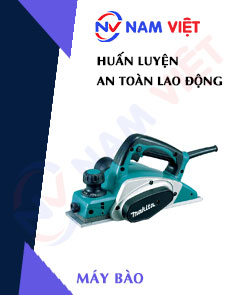
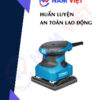
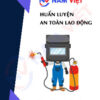





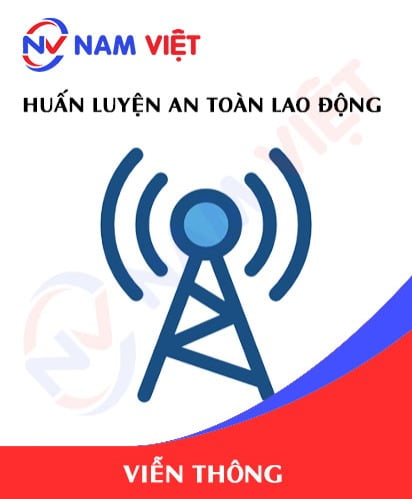
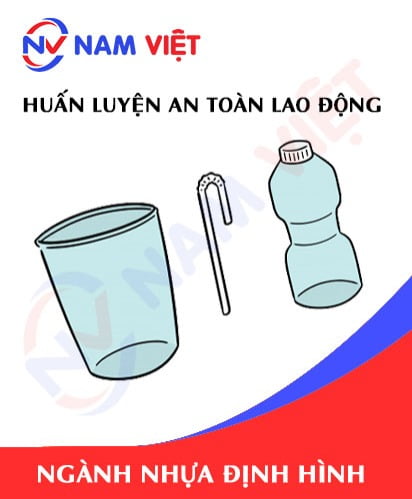




phanminhhang341
Trung tâm huấn luyện an toàn lao động chuyên nghiệp ở Việt Nam nha